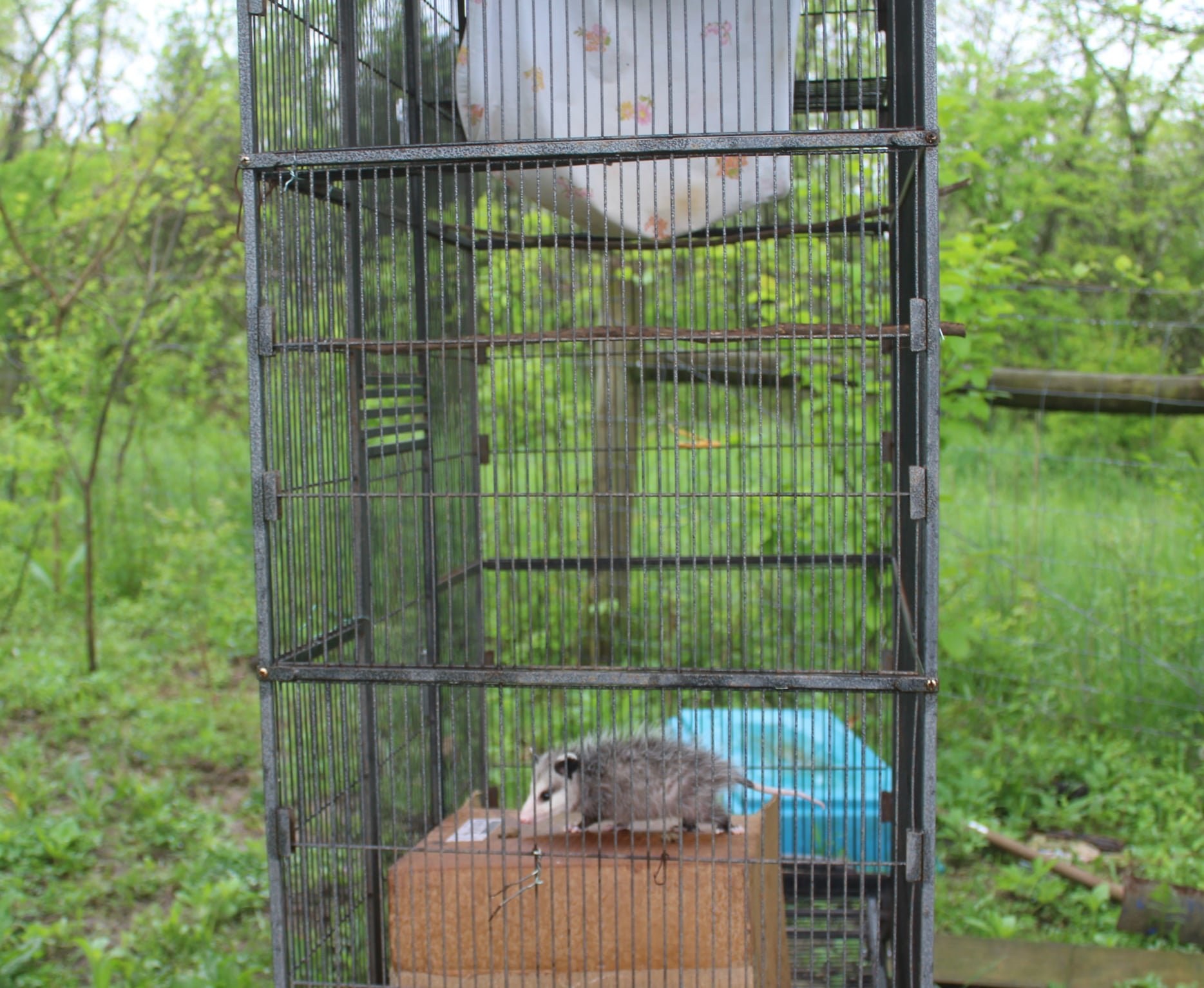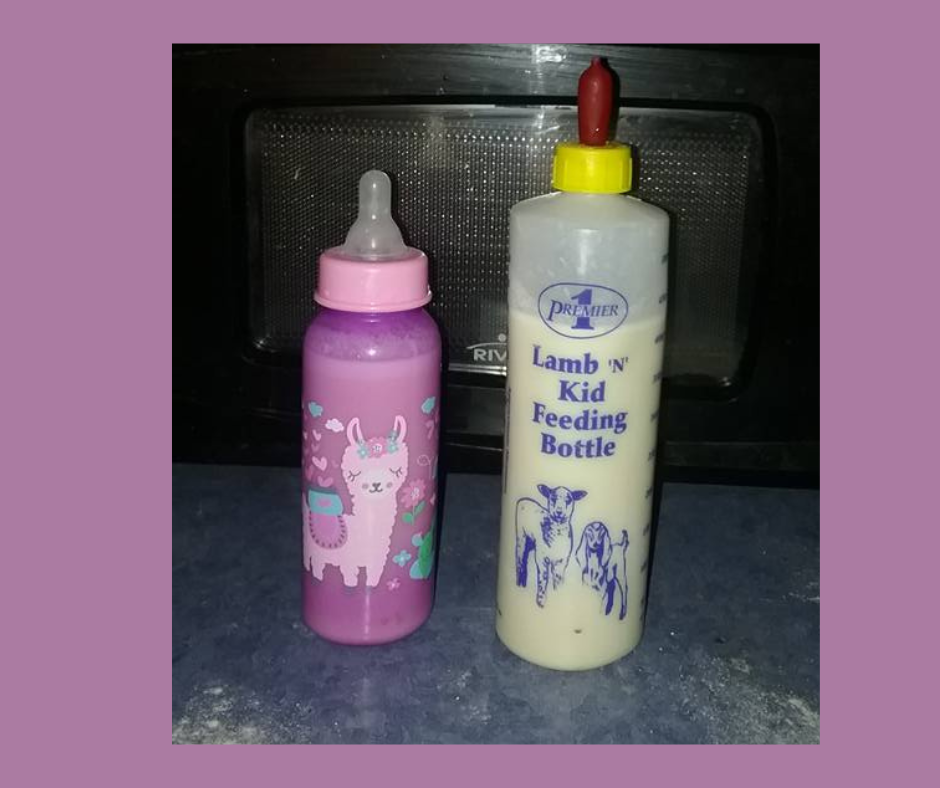Getting supplies together for your wildlife rehabilitation facility is very important. You will want to put some thought into how you set up your facility.
Supplies include cages, bedding, food, cleaning, and intake materials. There is always a long list of things that are needed. Your needs may change as you grow or decide to specialize.
For information on medical supplies see our blog Stock Your Medicine Cabinet For Wildlife. This blog also has some great ideas about getting donations.
SPACE
You may be working from a room in your home, a garage, or a dedicated building. Either way, the first step is to access your space and what species you can adequately care for.
Each species will need a dedicated space and enclosures that meet their individual needs. Animals grow and will require some natural outside space before being released.
A great guide is the Minimum Standards For Wildlife Rehabilitation. It gives enclosure size requirements for many species.
Feeding wildlife can be quite expensive so make sure you have a plan to get them from neonate to release.
WILDLIFE REHABILITATORS REQUIRE PERMITS AND LICENSING IN ALL US STATES. IF YOU ARE INTERESTED IN BECOMING A WILDLIFE REHABILITATOR THEN CHECK OUT OUR BLOG ARTICLE TO LEARN MORE.
Grow out cage for baby opossums. Getting them acclimated to being outdoors. This is a Midwest cage that did get a little rusty from being outdoors. Also, use caution in spring as storms can flip them over. I would bring babies in if serious weather was expected.
CAGES AND ENCLOSURES
The size of the cages is going to depend on the species and how old they are. Keep in mind that the animal will grow and need to be bumped up to the next size cage. I typically have a three-step system. Neonate enclosure, grow-out cage, and outside pre-release area.
For neonates, you can use glass aquarium-style tanks, plastic tubs, cat carriers, or cardboard boxes. I like to use cardboard boxes for eyes closed babies and glass tanks when eyes open. In the case of the boxes they can be broken down for trash or recycling. Glass tanks are easy to clean and disinfect.
Many people use plastic tubs. I have concerns about how well they can be cleaned – the plastic can absorb odors and microscopic parasites.
Throwing away a plastic tub for me is hard because its a waste of resources. So for me, there’s always a balance of finding materials that are sustainable and ones that promote good health and safety.
Cat carriers are another option. I get frustrated with them because they can be harder to open and extract the baby from.
Also as babies grow they can and will escape through the door. I once had a whole litter of possum babies climb through and take a self-guided tour of the nursery.
GROW OUT PENS
Grow out pens are larger cages that allow the baby more movement. Movement helps them to grow physically and mentally. I have used a variety of styles from wire dog cages to rabbit hutches to larger cages from the pet industry.
I love the Ferret Nation/Midwest cages and I keep several outside year-round. They are sturdy and stand up to young raccoons’ shenanigans! My oldest one is seven years old and is just now having some rust issues around the hinges.
PRE-RELEASE ENCLOSURES
When your baby has grown past the baby stage and is becoming a juvenile you will move them to a pre-release enclosure. They need a bigger space to allow them to start practicing becoming an adult. Climbing, hunting, foraging – these are skills you want to provide for your babies.
You can use a manufactured cage or you can build a custom cage. I like to use the standard chain link dog kennel and add a top and bottom to make it secure.
BEDDING
Fortunately bedding – blankets and towels- are easy to get second hand. Just let all your friends and followers know that you can use them and ask for donations.
Along with bedding goes washing. It’s always advisable to get a second washing machine for animal laundry. Your furry friends do carry a number of parasites and diseases that you would not in your personal wash.
FEEDING
There is a lot that goes into feeding your babes. Fluids, formula, cream are all things that baby mammals may require. As they get older you may be adding fresh fruits and vegetables, baby foods, and then on to worms and mice.
Keep in mind that if you intend to raise a carnivore such as a fox you need to be dedicated to feeding them live prey foods. It is crucial for them to learn how to hunt as juveniles before they are released.
For supplies, you should be well-stocked on a variety of bottles, nipples, and syringes. There are many options. I use a mix of things.
Some options such as the pet nurser bottles are easy to get at local feed stores. They are inexpensive and come with several nipple options.
For tiny babies, I love the miracle nipples that were developed by Christina Clark, a squirrel rehabber and the owner of Chris’s Squirrels and More. Miracle Nipple fits on the end of a strange and makes it very easy to measure how much the baby eats.
As babies get bigger or for bigger species I use just generic human bottles because they are very cost-effective.
CLEANING
Cleaning involves keeping your work and animal areas clean and free from germs. You may need to have on-hand mops, sponges, buckets – whatever you need to wipe down countertops and clean other surfaces.
Gloves – keep several boxes of nitrile or latex gloves on hand. They are important for protecting both you and the animal.
Disinfectant - Cleaning solutions that will kill bacteria and viruses are important to have around. Try Rescue or a Clorox-based solution.
Masks - Initially, masks were not on my mind as something you should have in stock. However, after experiencing the COVID-19 Pandemic, masks should definitely be in your supply cabinet. Masks are not just for protecting yourself. They are for protecting your babies. Many state Fish and Wildlife and Department of Natural Resources have asked rehabbers to wear masks to prevent transmission of COVID or any other disease to wildlife.
HEAT
Infants cannot thermoregulate (produce their own body heat when they are born) and need to have supplementary heat. You will need to have sources of heat such as heating pads, heat lamps, incubators.
Heating pads are easy to find however you have to make sure you have the right type. MANY heating pads have an auto turn off for safety reasons. You don’t want auto turn off.
Look pad that has various temperature settings and no auto turn off.
HEAT FOR TRANSPORTATION
If your center offers transportation and pick up babies you will want to have some options for warming a baby. This is in addition to having your car’s heat on and putting them on a warm seat.
Snugglesafe ceramic heaters are great. In fact, I use mine on a regular basis as they can hold the heat for six hours. You just put them in the microwave and heat them for several minutes. You do need to wrap them in a cover (they come with one) or a towel to protect the baby.
Air-activated hand warmers, rice bags, and hot water bottles are all options. Make sure the heat source is not in direct contact with the baby.
OFFICE SUPPLIES
Even if you are just taking in a few squirrels you will need office supplies. At the minimum, State permitting offices will require you to complete some paperwork.
A computer and printer will make your life much easier.
If you are doing a business you will want to have an internet connection so that you can promote yourself via social media. Getting a website is a smart idea so that you can be located easily by finders in your area.
Author Ame Vanorio is a licensed wildlife rehabilitator, science teacher, and director of Fox Run Environmental Education Center.






As wildlife rehabilitators, we are filled with love and compassion for the animals in our care. But love doesn't pay the bills! We must have a sustainable business plan and goals to raise money for our work.